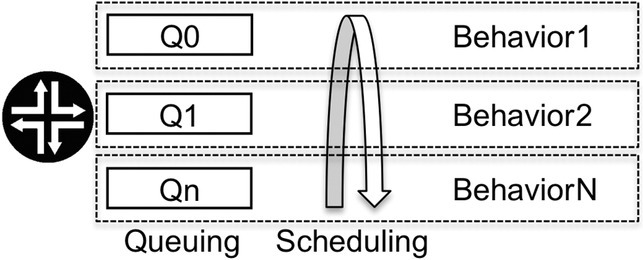7Queuing and Scheduling
Throughout this book, we have always referred to the queuing and scheduling tool as the star of the QOS realm, the tool that makes crystal clear the principle of benefiting some at the expense of others. In this chapter, we analyze the internals of the queuing and scheduling mechanism that allow such differentiation. But first, we analyze the parameters associated with any queuing and scheduling mechanism and their common ground. Only then do we present the different queuing and scheduling mechanisms. The most commonly deployed mechanism is PB-DWRR, which stands for priority-based deficit weighted round robin. However, we also present all other mechanisms that have preceded PB-DWRR because analyzing their pros and cons provides the necessary clues to understand the roots and goals of PB-DWRR and why the industry has moved toward it.
7.1 Queuing and Scheduling Concepts
Queuing and scheduling applied to an interface allows traffic to be split into multiple queues so that the scheduler can decide which type of treatment the traffic inside each queue receives. If the traffic mapped to each queue belongs to a specific class of service, the scheduler can apply differentiated behavior to different classes of service, as illustrated in Figure 7.1.

Figure 7.1 Queuing and scheduling applying different behaviors
The above is a quick recap of what has been ...
Get QOS-Enabled Networks, 2nd Edition now with the O’Reilly learning platform.
O’Reilly members experience books, live events, courses curated by job role, and more from O’Reilly and nearly 200 top publishers.

